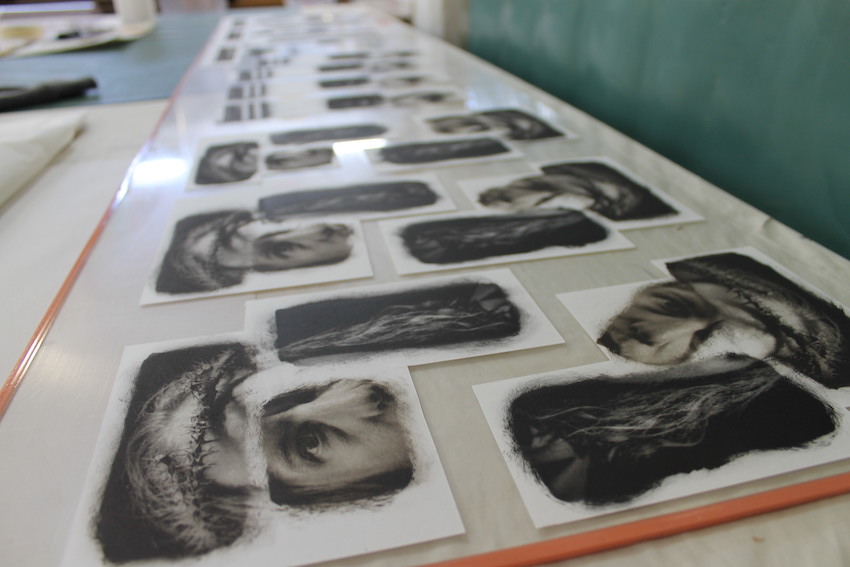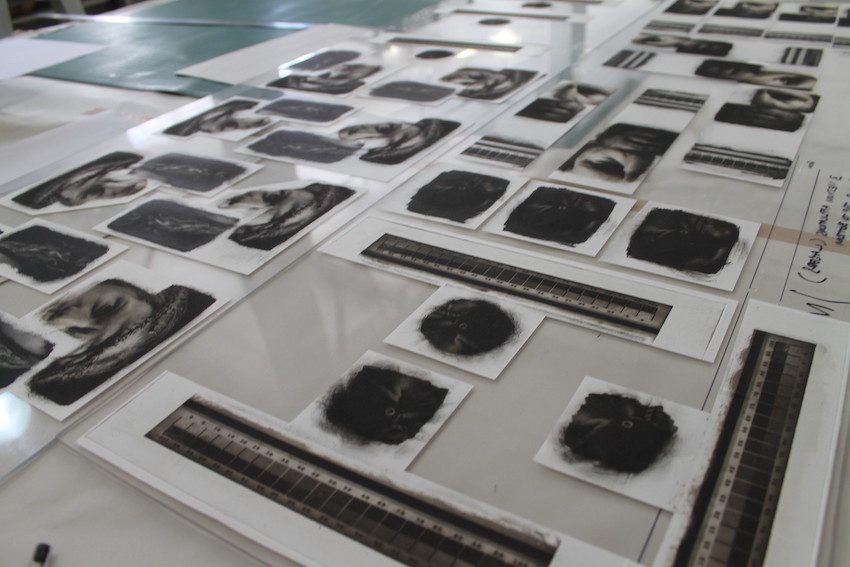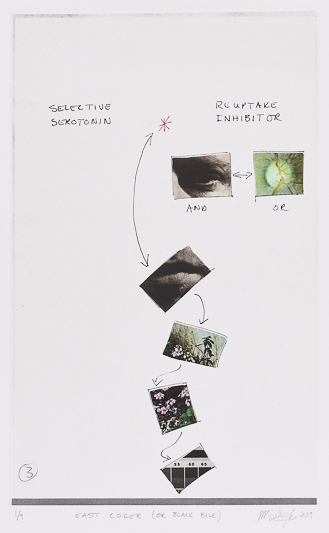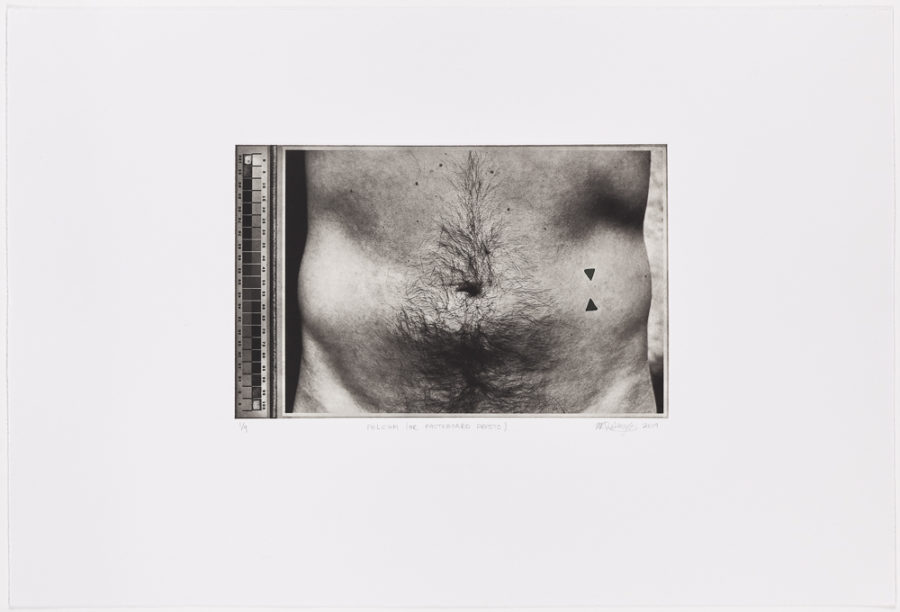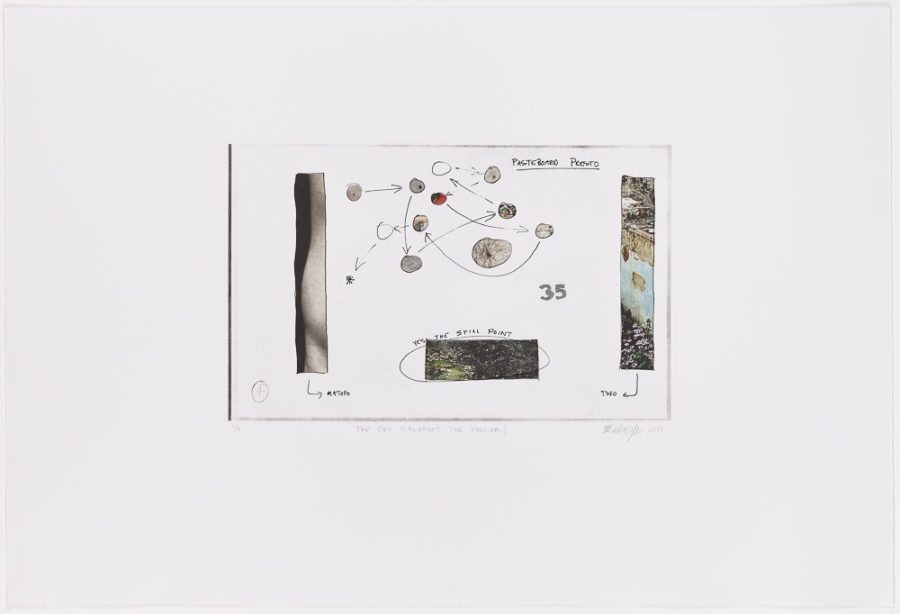Humorism (After Eliot and da Messina) marks Mikhael Subotzky’s first foray into printmaking. This series of eight prints, which combine a number of techniques, including photogravure, silkscreen, digital chine collé and monotype, continues Subotzky’s investigation into white masculine vulnerability. The series was created in concert with a new body of work, Massive Nerve Corpus, a solo presentation of paintings, drawings and collages which opened in May 2019 at Goodman Gallery (Johannesburg).
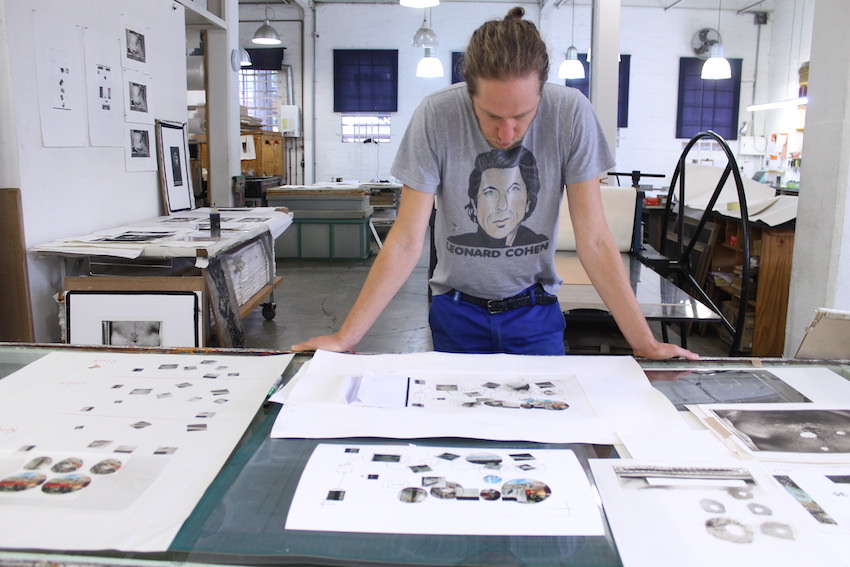
The series was created to be viewed as a whole, or at least in pairs, in order to bring together the myriad references and cross-references that Subotzky has engaged. The works speak to Subotzky’s primary areas of enquiry – whiteness and male privilege – as well as his practice of systematically pulling images apart in an attempt to “get inside” them and understand their representational function. Working with found images as well as his own photographs, Subotzky radically re-contextualises them, smashing, splitting apart, reconstituting into forms he sees as a more honest reflection of these images than their original form.
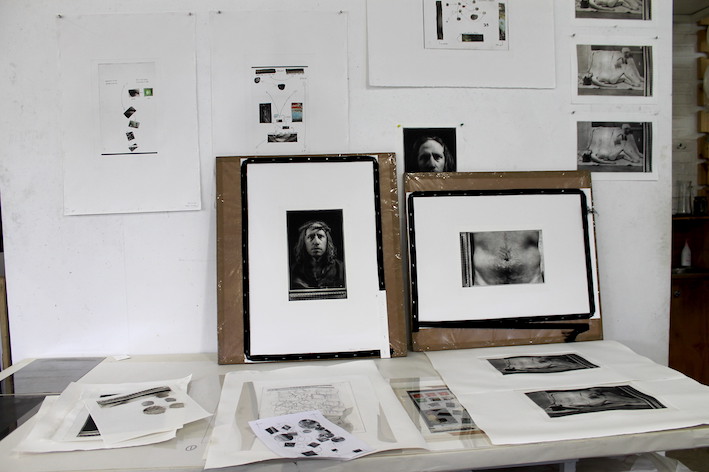
Humorism (After Eliot and da Messina) was created over the course of several years, having grown out of a desire to layer images, evolving under the guidance of master printmakers Phil Sanders and Jillian Ross, and printed by Kim-Lee Loggenberg (photo and direct gravures), Medeine Tribinevicius (digital printing) and Roxy Kaczmarek (silkscreen printing). The series includes four photogravure self-portraits, in which the artist uses silkscreen and digital printing to mark his skin, interfering with a straightforward reading. These works are complemented with four “diagrams” that draw imagery from the self-portraits and from another work by the artist: the painting, Water out of Sunlight, which depicts a derelict pool, which in its heyday would have stood as a signifier of white middle class suburbia. Though they appear to order the fragments, the diagrammatic elements in these works serve to further destabilize the image.
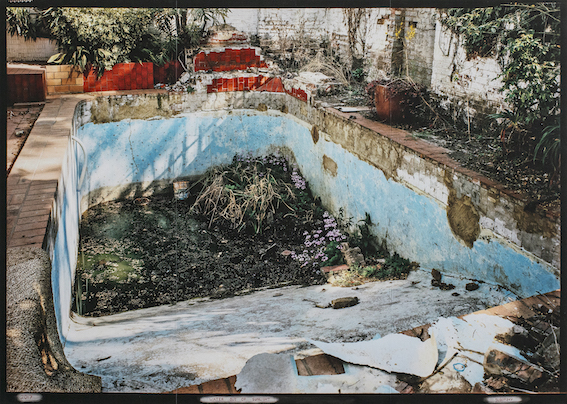
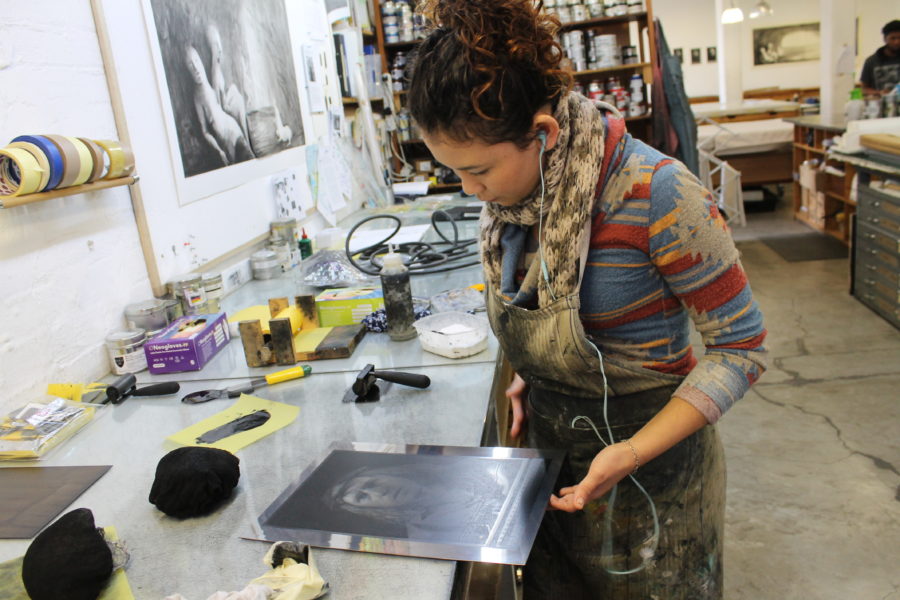
These prints are part of a new stream in Subotzky’s work – a cross-medium attempt to illustrate and understand the modernist poet T.S. Eliot’s Four Quartets, four long poems that were published over the course of 6 years, the last work of poetry created by Eliot, which are in essence a meditation on time and the process of moving through a life beset with massive and destabilising change.
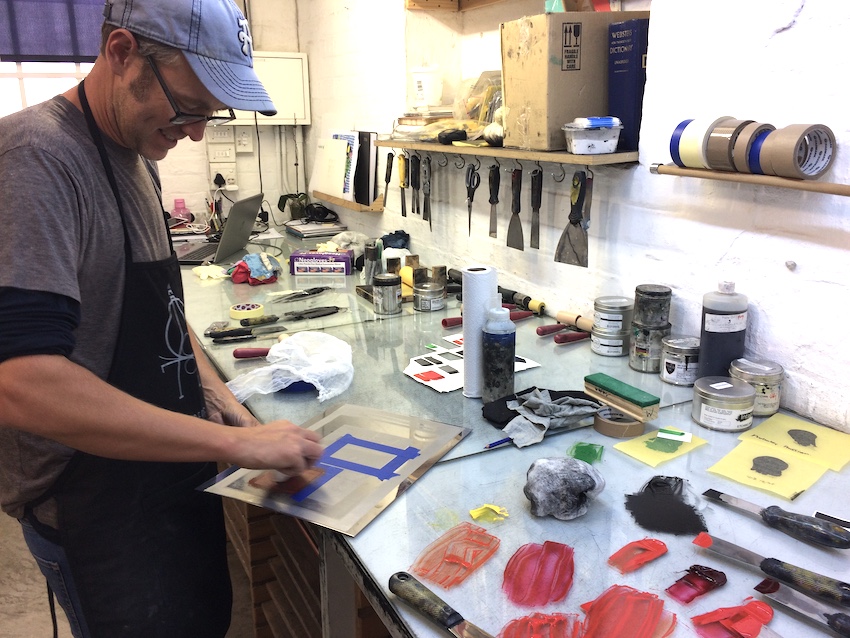
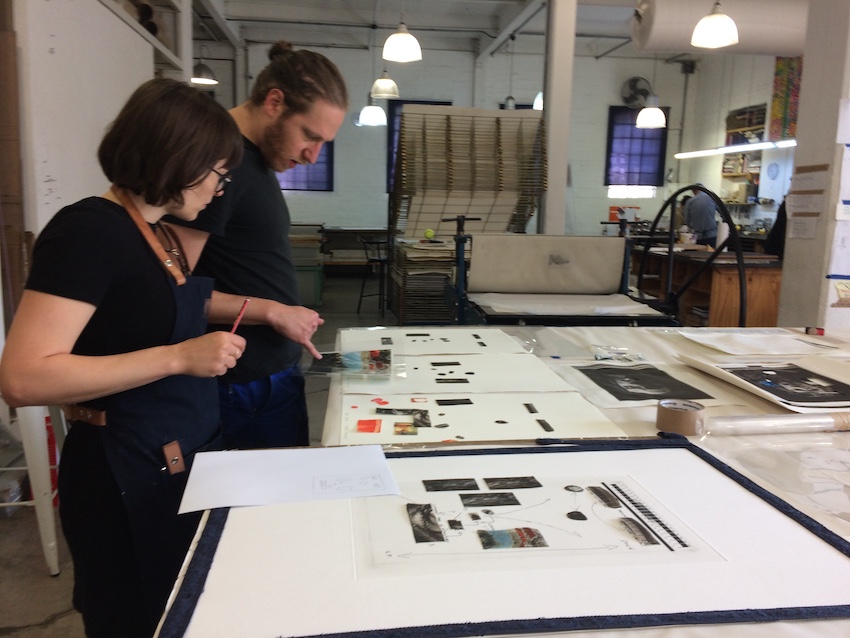
Drawing on a long history of artists’ “illustration” of classic texts – Rauschenberg’s Thirty-Four Illustrations for Dante’s Inferno and Robert Crumb’s Holy Bible for example – Subotzky seeks to get inside a text that has been fundamental to his aesthetic and philosophical understanding of the world.
The four self-portraits in and of themselves serve as a reference to Renaissance painter Antonello da Messina, who was probably the first painter to do a self-portrait in the modern sense, as a mode of introspection. Alongside references to da Messina and Eliot, Subotzky has looped in an Ancient Greek system of understanding human health and temperament, from which the series takes its title. This system was based on a balance of four bodily fluids, or “humors”: black bile (associated with intellectualism, contemplation and a tendency toward melancholy); yellow bile (associated with leadership, a quick decision-making and a tendency toward rage); blood (associated with good-naturedness, good social skills and a tendency toward insensitivity); and phlegm (associated with calmness, stability and a tendency toward apathy).
Within this overarching conceptual framework, resting on these three primary references, a myriad of other supporting references emerge through the drawing and text elements of the prints, and through their alternative titles – from personal and cultural signifiers, historical elements and previous bodies of work to magic card tricks. The result is a content-rich circular, referential cycle.
Text by Hagen Gersie and Jacqueline Flint
